Resources
Click on the tabs below, to view the resources for each chapter.
Chapter 1
What is Rhythm?
Intuition
Chapter 2
For an outstanding example of editing as a form of choreography, view this extraordinary work There is a Place:
https://www.youtube.com/watch?v=DicA-jC1gS8
In There is a Place (Katrina McPherson, Simon Fildes and Sang Jijia, 2010) shots are cut together to form phrases. McPherson & Fildes’ films make use of cutting as a form of movement, along with camera movement and performer movement. So each cut is a move to a different shot, a move of the spectator’s mind and eye, a move that contributes to the phrasing. In this approach, the editor takes fragments of movement and designs them into phrases. Rises and falls of emphasis, direction and speed changes, size, shape, and performance are all shaped into the dynamic flow that is the “cine-phrase’s” meaning. [photo credit: Goat Media, Katrina McPherson]

For more work by Simon Fildes and Katrina McPherson see:
http://www.go-at.co.uk/Goat.html
Chapter 3
Chapter Three of Cutting Rhythms, Intuitive Film Editing, is about three tools an editor has for shaping rhythm: timing, pacing and trajectory phrasing. There are of course, other tools and strategies an editor may use. (For example, diplomacy. See Chapter 11 – “diplomacy is not being nice it is being tough, nicely”.) One strategy I find comes up in almost every film I cut is “killing your babies”. The editor is often the person who has to tell the director, diplomatically, it is time to “kill their babies”. But what are they? And why do they have to go? This blog post offers my theory.
http://www.karenpearlman.net/karenpearlmannet/why-do-movies-want-directors-to-kill-your-babies
Chapter 4
Rhythmic Patterns
Chapter 5
Editing is not Invisible
Chapter 6
All of The Physical TV Company’s dance films are edited using the processes described in Chapter 6. Here are links to just some of these films, with others available from: http://www.physicaltv.com.au/Productions/644/n/3/0/0/#.Va-F-CqqpHw
Rubberman Accepts the Nobel Prize
Directed by Karen Pearlman
Edited by Andy Canny
A superhero who speaks only the language of dance makes an outrageous, graceful and rambunctious physical acceptance speech.
https://vimeo.com/1380149
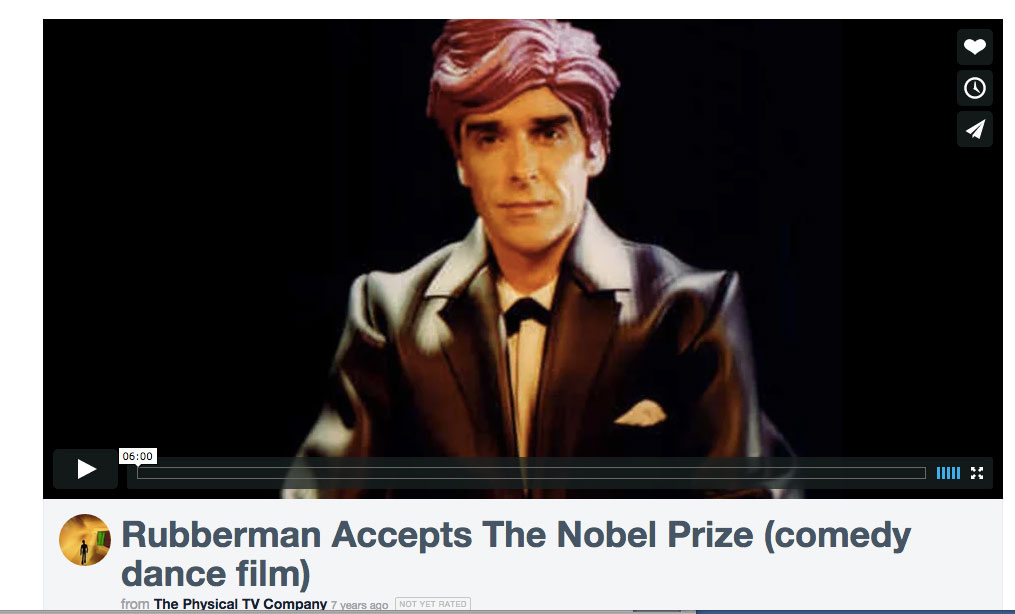
No Surrender
Directed by Richard James Allen
Edited by Karen Pearlman
No Surrender tells the story of a young Indigenous woman who is invaded, terrorized and physically attacked by an unseen intruder wielding a camera. As she nears the point of surrender, the woman’s spirit separates from her body and, through the language of dance and spiritual movement, she finds the strength to fight back and overcome her attacker. (No Surrender is suitable for mature audiences)
View No Surrender here:
https://vimeo.com/1385925
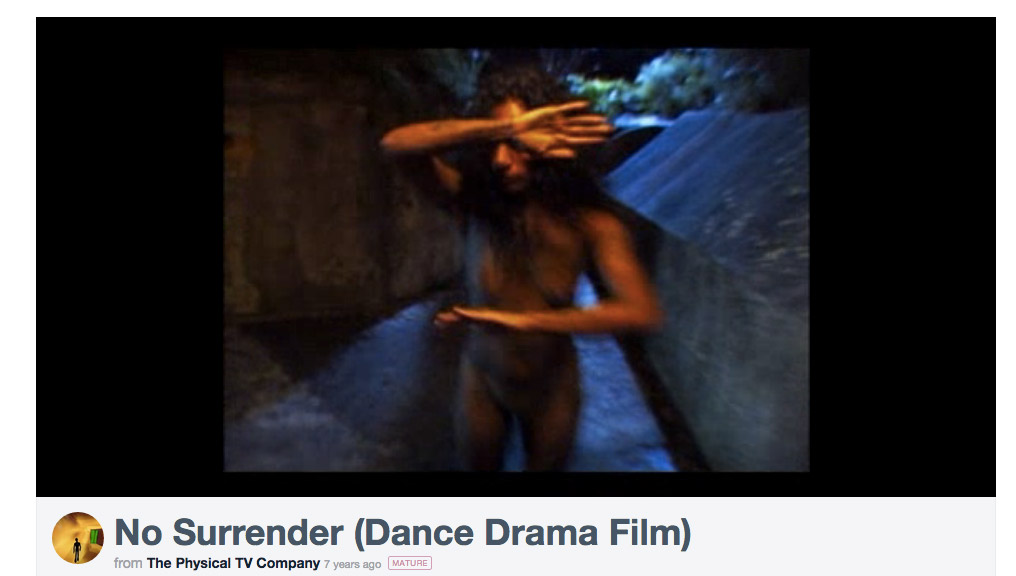
Now (excerpt from Thursday’s Fictions)
Directed by Richard James Allen
Edited by Karen Pearlman
(Now is suitable for mature audiences)
The excerpt from Thursday’s Fictions that is a case study for this chapter can be accessed here:
Vimeo: https://vimeo.com/76924584
Password: ptvnowscene
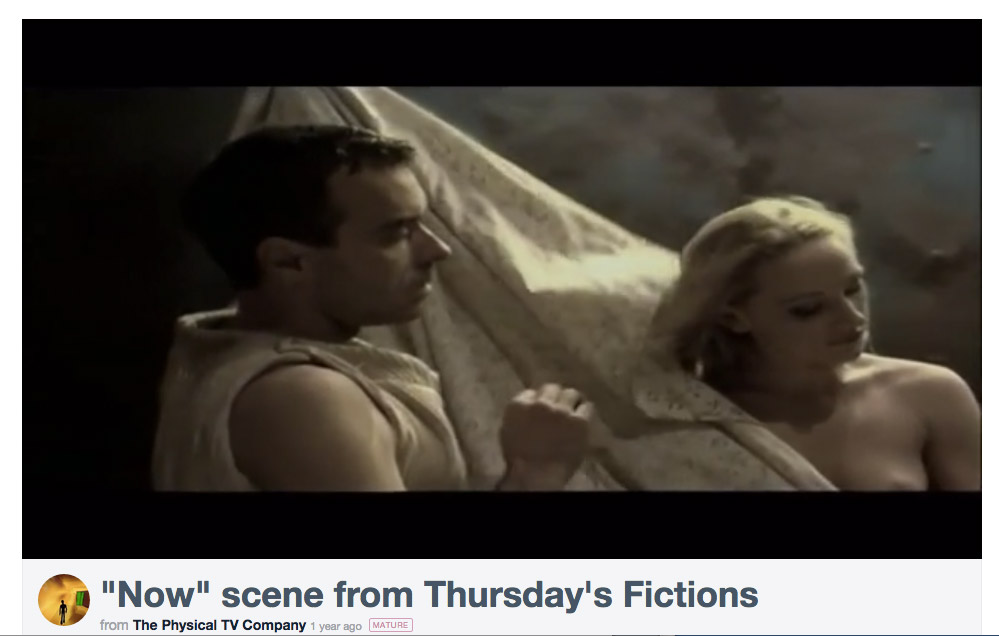
For a deeper understanding of the principles of cutting physical rhythm put forward in Chapter Six, the following films are well worth studying:
Man with a Movie Camera (1929) the extraordinary collaboration of Dziga Vertov, who credits himself as the film’s “organizer”, Michael Kaufman, cinematographer (onscreen as the man with the movie camera) and Elizaveta Svilova, editor (onscreen as the woman at the editing bench). There are many versions of this seminal documentary film that can be found on YouTube, but the DVD—widely available through commercial online DVD retailers—offers higher image resolution and a fascinating commentary by Vertov scholar Yuri Tsivian. For more on Vertov and the editor who worked with him, Elizaveta Svilova, visit: http://www.filmmuseum.at/jart/prj3/filmmuseum/main.jart?rel=en&content-id=1218679066711&reserve-mode=active
A Colour Box by Len Lye can be seen on YouTube (https://www.youtube.com/watch?v=-DksmbDMDUU) as can many of Len Lye’s other films. For more information about this extraordinary filmmaker and kinetic sculptor, visit: http://govettbrewster.com/len-lye/
Chapter 7
Emotional Rhythm
Chapter 8
This blog post on Cutting Webseries applies some of the principles of cutting structure, rhythm and movement of events found in Chapter 8 to the cutting of online episodic series.
http://www.karenpearlman.net/karenpearlmannet/cutting-web-series-whats-important
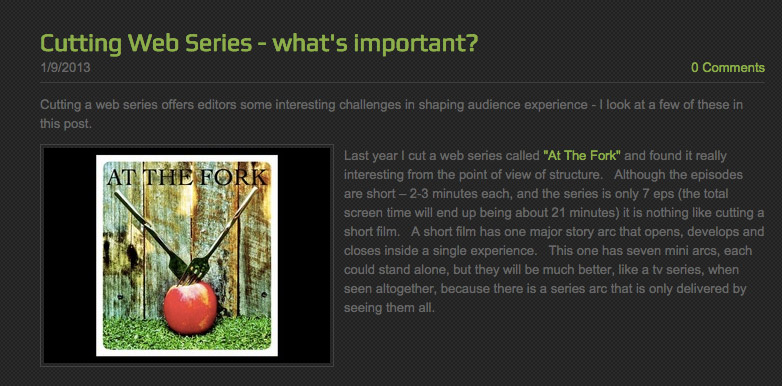
What can the first and last images of a film tell us about its premise and design? Are the questions opened by the first shot resolved in the last or have we basically returned to where we started? Editor Jacob T. Swinney has cut together a fascinating and thought provoking study called First and Final Frames, which places of first and last shots in 55 films side by side. First and Final Frames can be found online at: https://vimeo.com/122378469
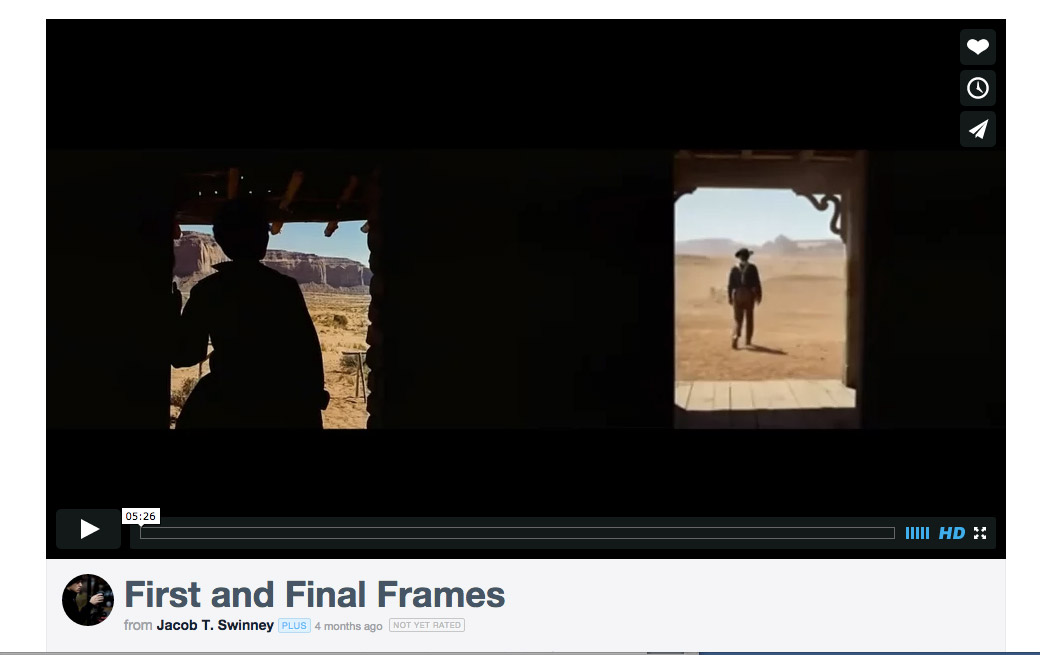
Documentary and responsibility:
Chapter 9
Chapter 9 of Cutting Rhythms, Intuitive Film Editing looks at style, but it is not the first and certainly not the last word on the subject. For more on film style and the style found in particular films, I recommend becoming a regular reader of Kristin Thompson and David Bordwell's excellent blog: Observations on Film Art.
Here is a link to just one of many useful and informative posts on editing style:
http://www.davidbordwell.net/blog/2006/11/15/cutting-remarks-on-the-good-german-classical-style-and-the-police-tactical-unit/
Chapter 10
The devices discussed in Chapter 10 can found in countless fiction films, documentaries, television and web series. For particularly fine examples see the films discussed as case studies in the chapter, all of which are readily available through commercial DVD distributors, and many of which can be accessed through various streaming services. Karen Pearlman's 2016 film Woman with an Editing Bench also features devices of parallel action and time manipulation and will be available through a link to be uploaded on to this site in 2017.
Photo Caption:
Leeanna Walsman and Richard James Allen in Woman with an Editing Bench [photo courtesy of The Physical TV Company].
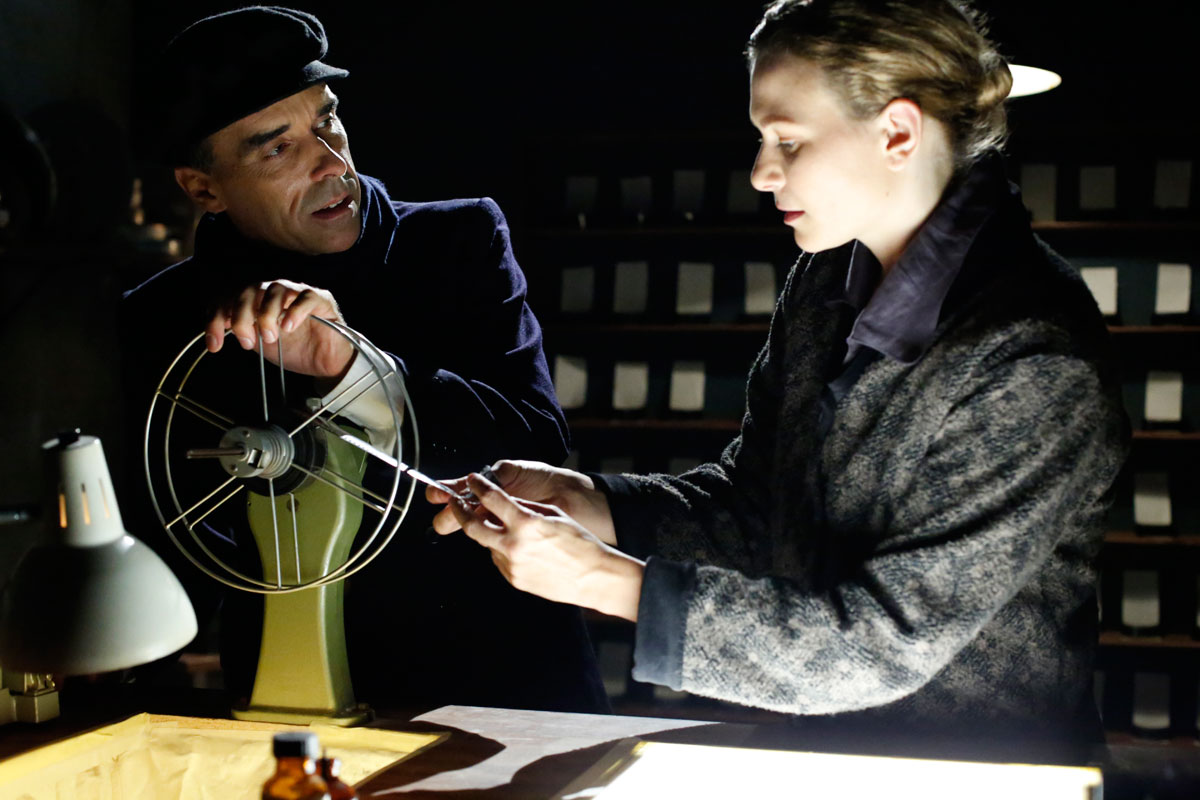
Chapter 11
For more on collaboration and film crews, have a look at this blog post:
http://www.karenpearlman.net/karenpearlmannet/manifesto-on-teaching-creative-practice-through-screen-studies
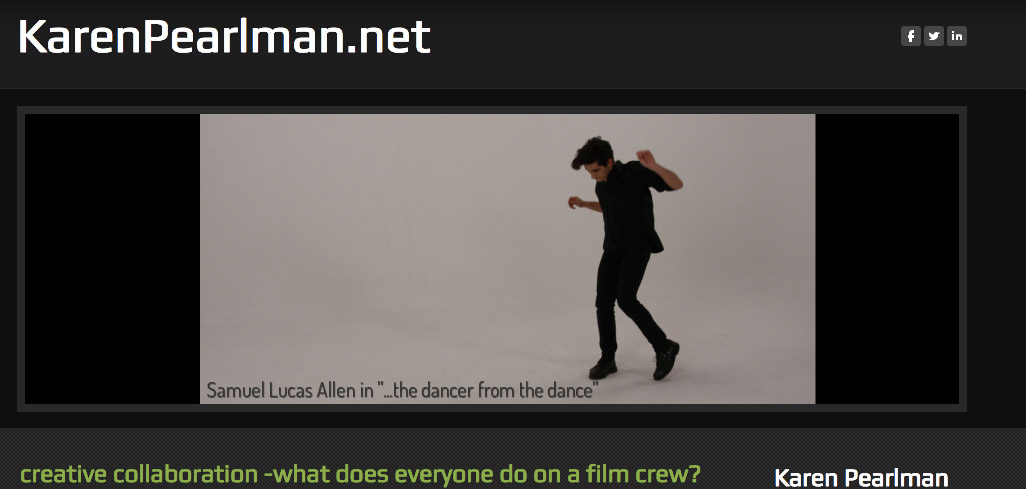
Chapter 12
On Screen Drafting